Elbow
Tennis elbow, scientifically known as lateral elbow tendinosis (LET), is a challenging condition that silently threatens the performance and enjoyment of racquet sport enthusiasts in our Vaughan community. Far more than just a simple sports injury, this condition represents a complex interaction between physical mechanics, individual physiology, and athletic technique.
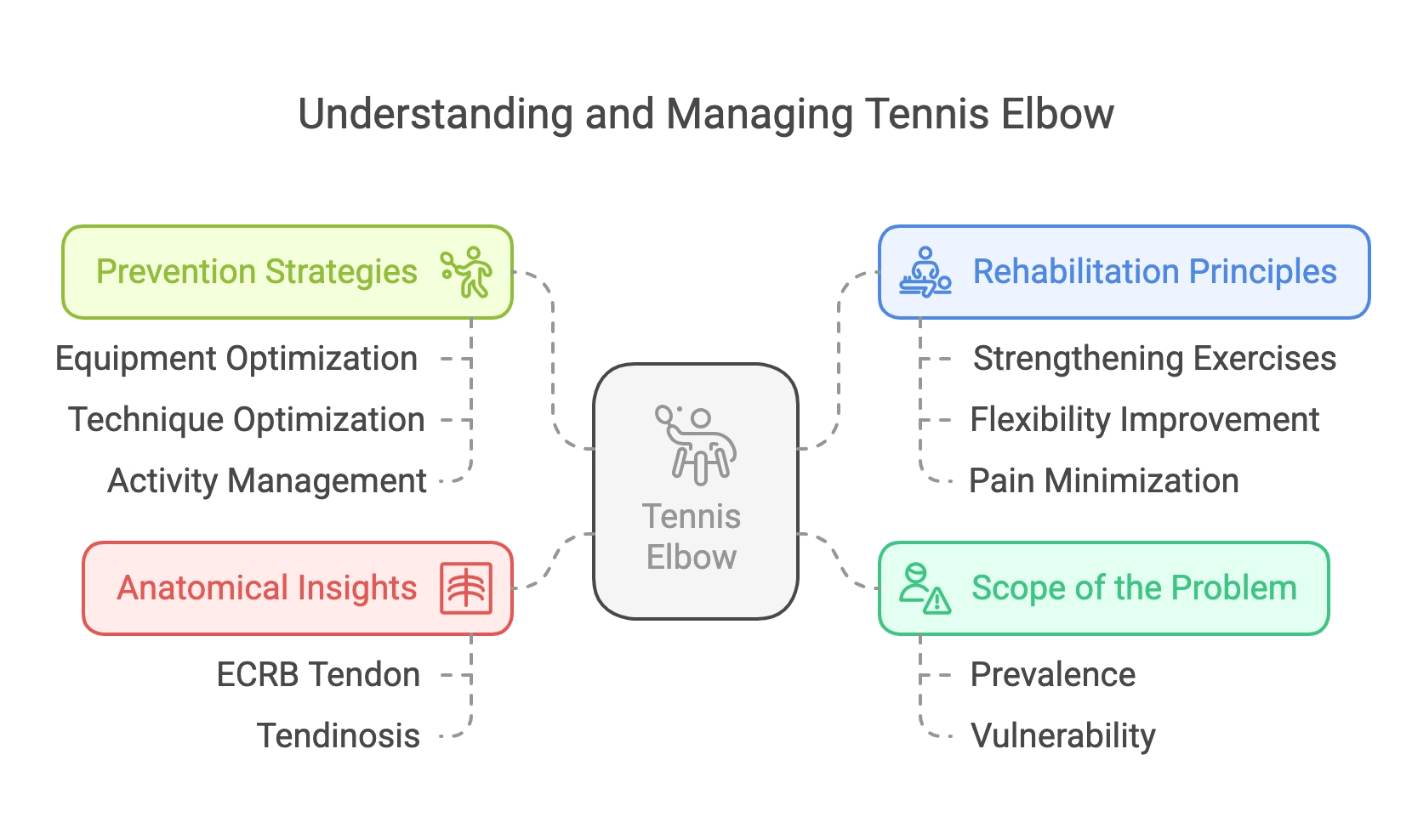
Our clinical observations reveal a significant health concern. Tennis elbow affects approximately 2.5 to 3.5 individuals per 1,000, with a striking prevalence among middle-aged athletes. The peak incidence occurs between 40 and 50 years of age—a critical period when many recreational athletes are at the height of their passion for racquet sports.
While tennis players might assume this condition exclusively impacts professional athletes, the reality is far more nuanced. Individuals engaged in repetitive gripping activities, whether through sports or occupational tasks, are particularly susceptible. For racquet sport enthusiasts, specific risk factors emerge that can dramatically increase the likelihood of developing this condition.
.gif)
At the heart of tennis elbow lies the extensor carpi radialis brevis (ECRB) tendon, a critical structure in the forearm's complex muscular system. Unlike traditional inflammatory conditions, tennis elbow is a tendinosis—a degenerative process resulting from cumulative microtrauma and excessive loading.
This distinction is crucial. It means that the condition isn't simply about treating acute inflammation, but about understanding and addressing the underlying biomechanical stress placed on the tendon.
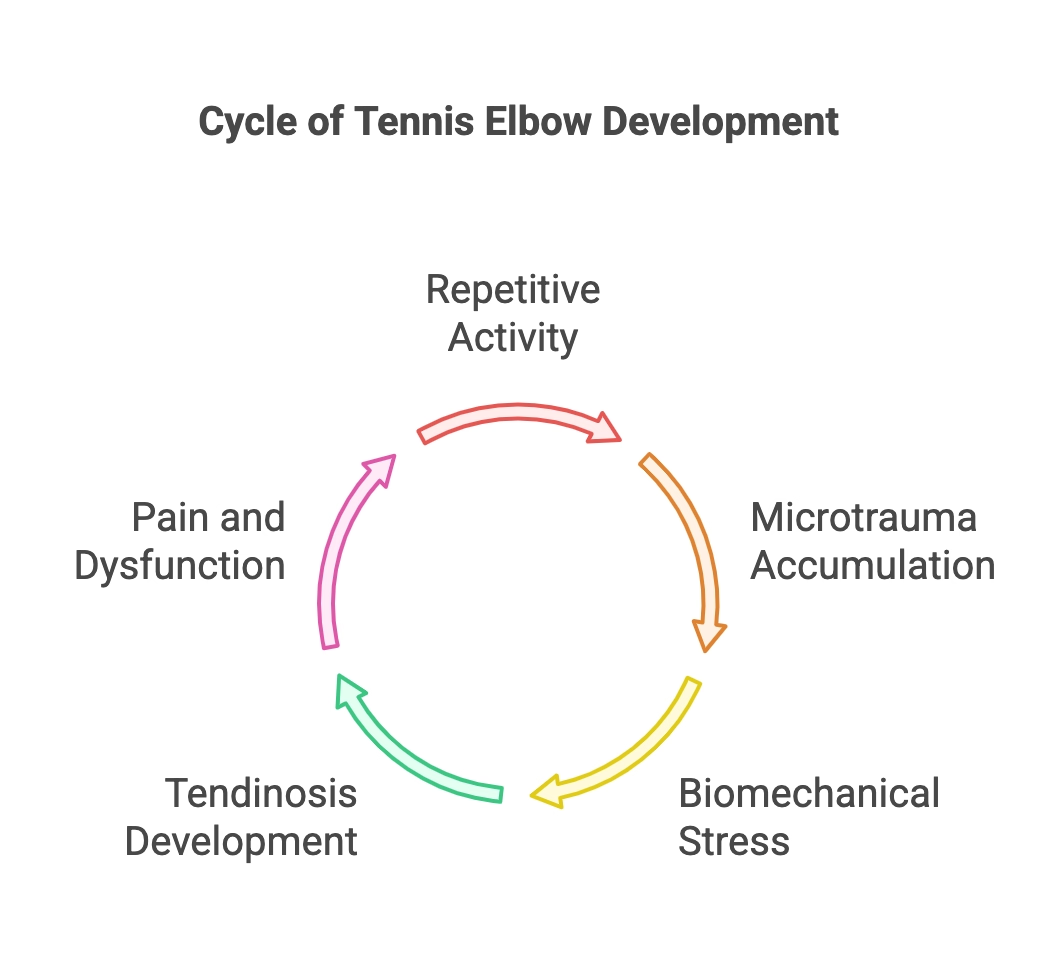
One of the most effective prevention strategies begins with proper equipment selection. The Nirschl criteria provide a precise method for determining grip size—measuring from the middle of the proximal palmar crease to the tip of the ring finger. An appropriately sized grip can significantly reduce unnecessary strain on forearm muscles.
Equally important are stroke mechanics. Power generation should flow through the entire kinetic chain, moving from larger muscle groups to smaller ones, rather than relying exclusively on wrist and forearm muscles. For those using a one-handed backhand, consider modifying your technique or transitioning to a two-handed approach to limit excessive wrist extension.
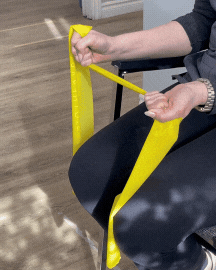
Prevention isn't about elimination but intelligent modification. Our approach involves:
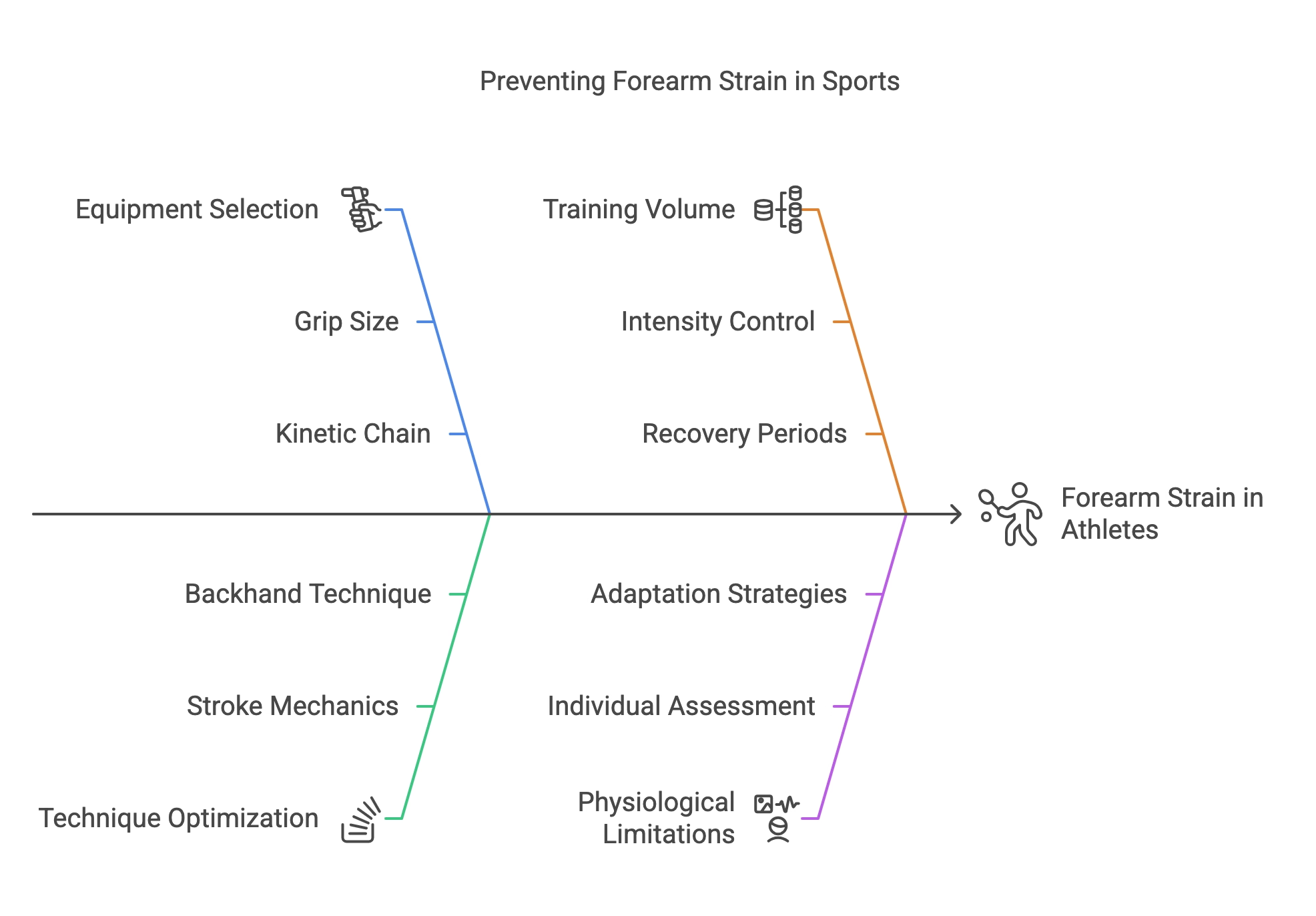
Successful management of tennis elbow revolves around a comprehensive rehabilitation strategy. This isn't a one-size-fits-all approach but a personalized journey of progressive loading, strength building, and biomechanical retraining.
.gif)
Key rehabilitation goals include:
Short-term relief can be achieved through:
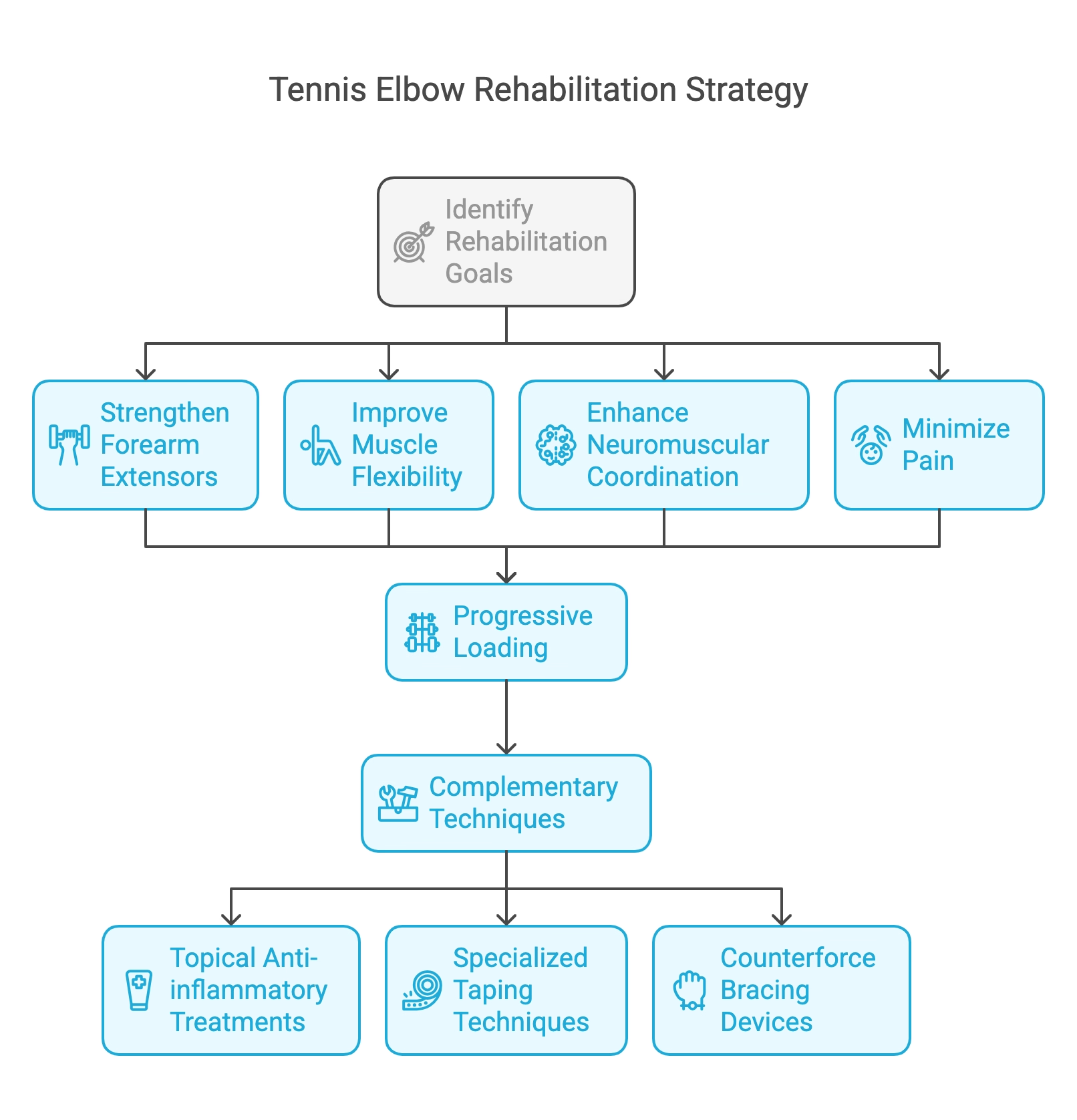
Tennis elbow doesn't have to be an inevitable consequence of athletic pursuit. By understanding the intricate biomechanics of this condition, implementing targeted prevention strategies, and seeking professional guidance, you can continue enjoying their favourite activities with reduced risk and enhanced performance.
.gif)
Your Journey Starts Here
At Vaughan Physiotherapy, we're committed to helping you understand, prevent, and overcome tennis elbow. Our team of expert physiotherapists combines cutting-edge research with personalized care to keep you performing at your best.
Schedule your comprehensive assessment today and take the first step towards injury-free athletic performance.
.gif)
Recover faster, move better, and feel stronger with expert physiotherapy. Our team is here to guide you every step of the way.
